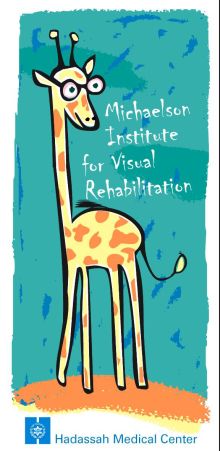
The Hadassah Medical Center’s Michaelson Institute for the Rehabilitation of Vision, also known as the Pediatric Low Vision Clinic, enables patients as young as two months old to capitalize on whatever vision they have.
The Institute, unique in Israel, and part of Hadassah’s Center for Pediatric Ophthalmology, sees patients from all over the country. In their initial visit, parents begin to comprehend the challenges their children will face, but are also comforted by the realization that a caring and competent team of low-vision specialists–including a genetic counselor, optometrist, and social worker–is there to support them.
Making the proper diagnosis is the team’s first objective. As Dr. Claudia Yahalom, head of the Institute, expresses: “We give parents the explanation they so desperately seek, we teach children how to live with their condition, and we give everyone hope and help.” She adds: “There are many rare diseases that even pediatric ophthalmologists don’t recognize. Yet, what is considered a rare disease in other places is rather common at Hadassah.”
One mother, for example, was told that her two-month-old baby was blind. At the Michaelson Institute, specialists identified the infant’s condition as albinism, an inherited disorder that results in a complete or partial absence of pigment in the eyes, causing decreased vision. Now that baby is ten months old, developing just like any other toddler and learning to use the vision he has, Dr. Yahalom reports.
Hadassah is a national center for albinism and nystagmus, the unintentional jittery movement of the eyes, which interferes with vision. “We don’t have a cure, but many times surgery can help,” Dr. Yahalom relates, recalling a 10-month-old girl with nystagmus and strabismus, commonly known as “crossed eyes.” The girl exhibited signs of delayed visual and motor development. After Hadassah operated on her eye muscles and gave her glasses, both began to develop normally.
The Michaelson Institute sees only about eight children a day, ensuring that there is sufficient time to respond to the children’s psychological and social needs and to provide them with all the tools they require to maximize their vision.
